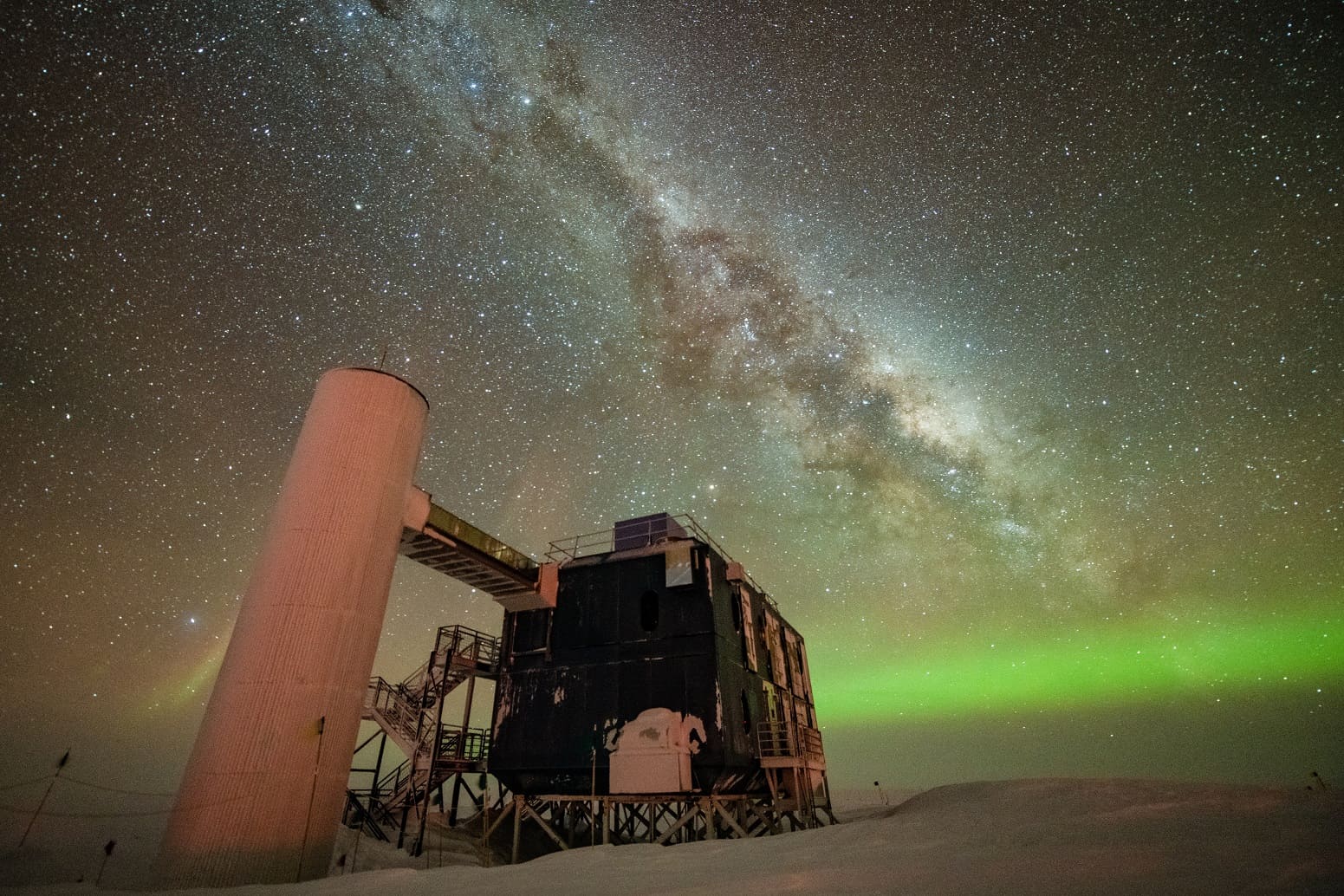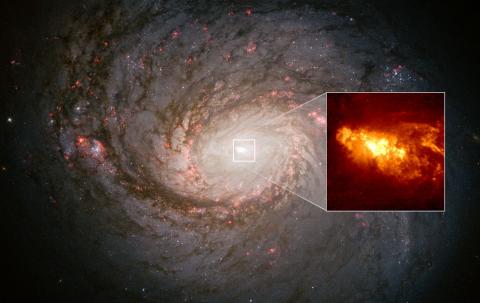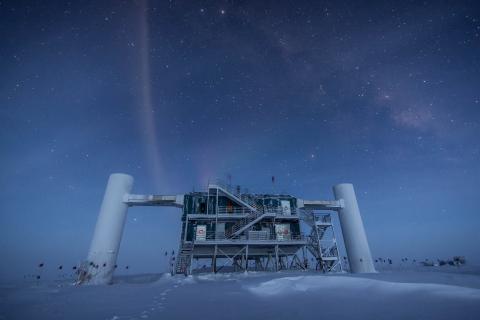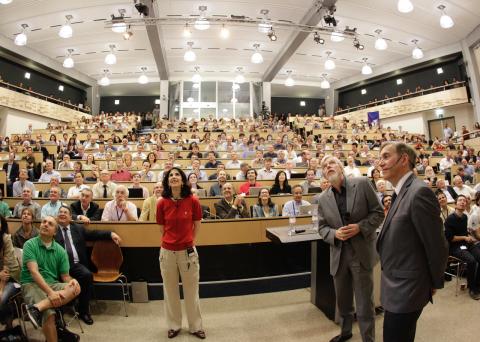Reaction: IceCube detects for the first time the emission of high-energy neutrinos from inside the Milky Way galaxy
The IceCube neutrino observatory, built deep under Antarctic ice, has detected the emission of high-energy neutrinos from within the Milky Way. According to the research, published in the journal Science, this is the first time scientists have obtained solid evidence for the emission of these particles within our galaxy, as they had previously identified high-energy neutrino emission from extragalactic sources.

IceCube under a starry night sky, with the Milky Way above the auroras in the background. Credit: Yuya Makino, IceCube/NSF.
Carlos Pobes - neutrinos Vía Láctea EN
Carlos Pobes
Postdoctoral researcher of the Q-MAD group at the Institute of Nanoscience and Materials of Aragon (INMA)
IceCube surprises again by cleverly squeezing its data to provide a new discovery: the first evidence of high-energy neutrinos coming from our own galaxy. IceCube had already succeeded in identifying the first sources of very high-energy neutrinos: supermassive black holes in the interior of distant galaxies (known as blazars) that emit neutrinos above 100 TeV, where the signal can be distinguished with some confidence from the background produced by atmospheric muons and neutrinos. Galactic sources, however, emit in lower energy ranges (1 TeV), so they have remained hidden until now.
Thanks to new artificial intelligence algorithms applied to a specific topology of events less affected by the atmospheric contribution (cascades instead of tracks), they have managed to increase significantly (more than 20 times) the number of neutrino candidates coming from the galactic plane. It is worth remembering that, because of its location, and although it may seem paradoxical, IceCube is more sensitive to the sky in the northern hemisphere than in the southern hemisphere, where the centre of our galaxy is located. These candidates were then compared with up to three different models of diffuse emission in the galaxy, which allowed them to rule out, with more than 4 sigmas of significance, the absence of galactic neutrinos. The main contribution is still atmospheric, but the need to include neutrinos from our own galaxy to explain the data is confirmed, a completely new and highly relevant result.
The detection corresponds to what is known as diffuse emission, i.e. neutrinos generated by the disintegration of galactic cosmic rays of uncertain origin because they have been deflected by the magnetic fields of the galaxy. The collaboration has also searched for specific sources of these neutrinos, but their results, despite some faint hints, are inconclusive. Nor has it been possible to establish which of the models under consideration is operating in our galaxy.
While awaiting the construction of IceCube-Gen2 (the future extension of the telescope) or the commissioning of KM3NeT (a similar telescope in the Mediterranean, which will have a higher sensitivity in the direction of the centre of our galaxy), the collaboration continues to squeeze the scientific potential of the instrument, providing first-class results that will help to understand the most violent objects and phenomena in the universe.
He was IceCube's Winter Over in 2012.
IceCube Collaboration.
- Research article
- Peer reviewed



